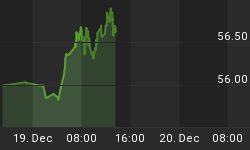I have spent a fair amount of time in these blog writings on deciphering where and how investors are positioned with their capital. We have the "dumb money" and the "smart money" and all sorts of flavors in between, and if we could avoid being the "dumb money" and understand what the "smart money" is really doing, my investing world would be a whole lot better. Unfortunately, the market is never really that easy or simplistic.
Extreme data points - in any data series - often don't herald a reversion to the mean but may lead to new trends. A current and recent example would be the flow of money into bond funds. Over the past year it has been estimated that more money has gone into bonds funds then into the market during the entire internet bubble. Therefore, this must be a bubble in bonds. Too much money has gone into bond funds and it is only a matter of time before the bubble is popped. Then the amount money in bond funds will go back to a more "normal" level - one that we have seen in the past; that it is, we will see a mean reversion in the flow of money into bond funds.
But consider for a minute that maybe these new "extreme" flows into bond funds are just a new trend that could possibly persist for a very long time such that these new and current extremes set a new level as to what is meant by extreme. Believe me in the markets it happens all the time.
Another example that I can show you graphically comes from the Rydex asset data and flow of money into energy funds back in 2004. Figure 1 is a weekly chart of the Oil Services Holders (symbol: OIH) and the data in the lower panel represents the amount of money in the Rydex Energy Services fund. From 2001 to late 2003, the amount of assets in this fund rarely exceed $100 million. Then all of a sudden this value hit a new extreme (point #1 on chart), and another (point #2) and another (point #3). Prices didn't mean revert (as one would expect when too many investors jumped on board), they kept going higher. The initial and new extreme (point #1) wasn't a sign that led to lower prices and mean reversion. It was a sign of higher prices to come.
Figure 1. OIH v. Rydex Energy Services Fund (asset data)/ weekly
Is this a failure of sentiment as a useful indicator or such tools and monikers that measure investor sentiment such as the "smart money" and "dumb money". Or is this just an inability of "us" analysts and pundits to correctly interpret the information? In this series of articles I will argue the later. Most interpret extremes in sentiment as having one outcome - it must mean revert. That is the "typical" notion, but there is nothing "typical" about the market, and we see extremes getting more extreme all the time. So over the next couple of weeks, I plan to put forth a newer, better way of interpreting these extreme data points.
Consider this new thinking for an old tool.















